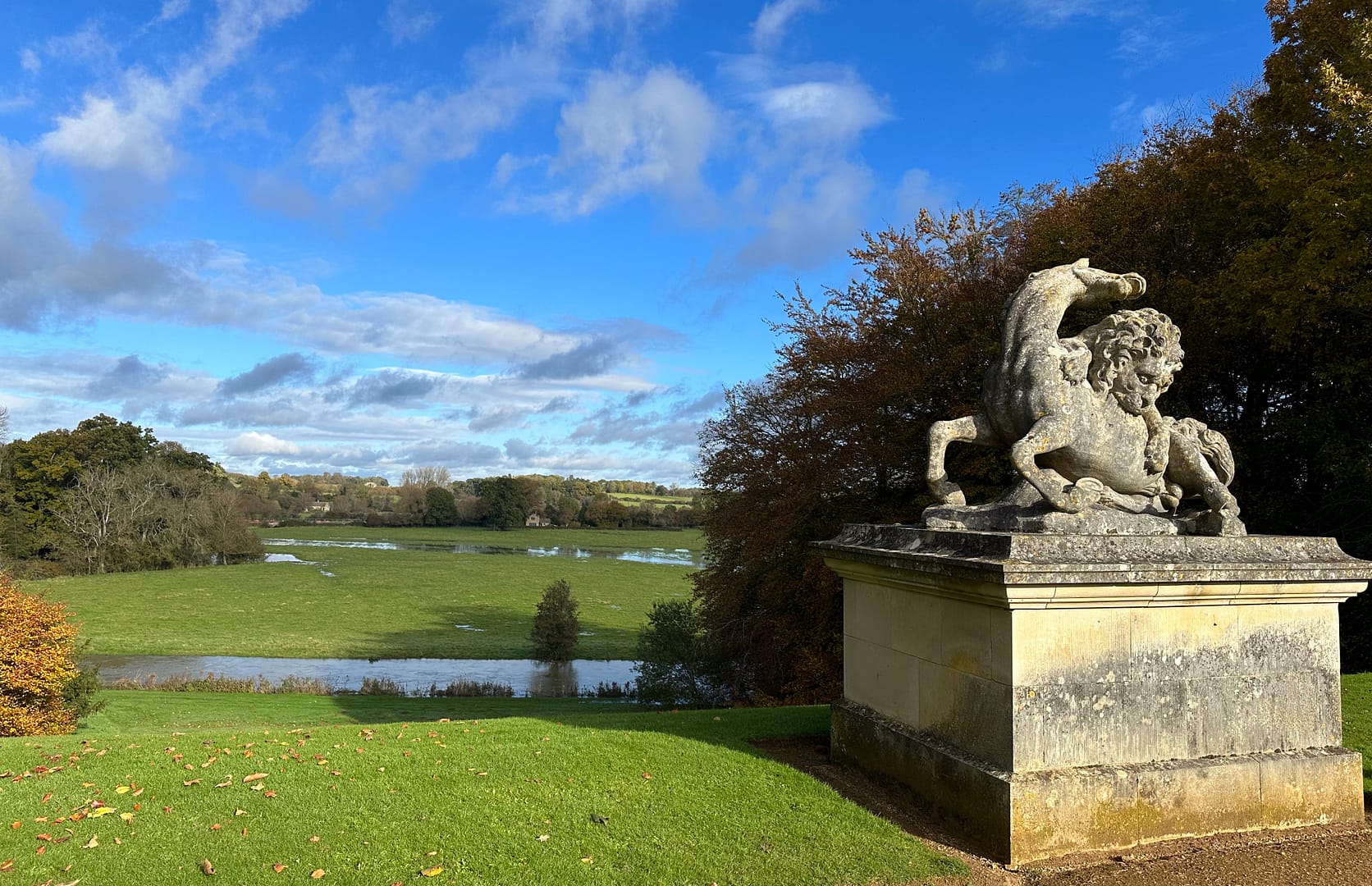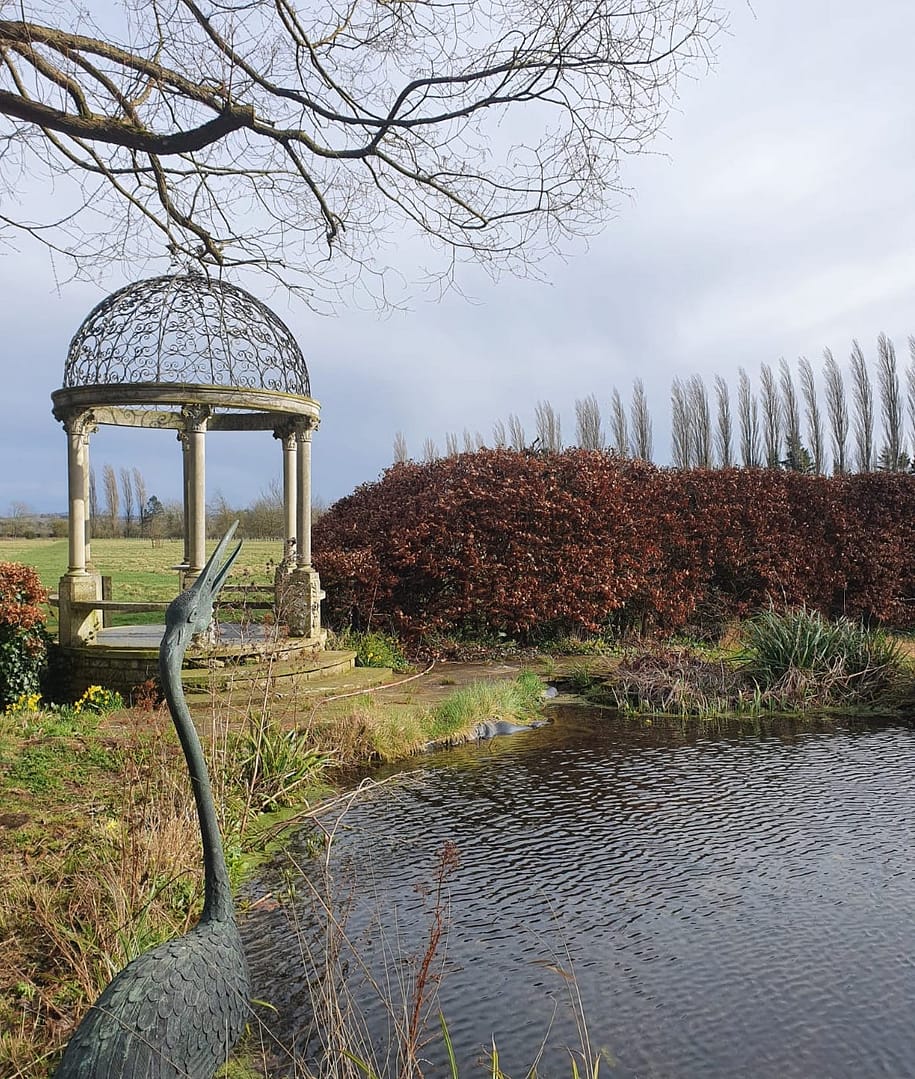Originating from the 18th century, English landscape gardens were first created in response to the more formal styles seen in French and Dutch garden design.
Traditionally associated with grand and historic estates, English landscape gardens typically include a series of statement features such as expansive lakes, vast lawns and glorious woodland areas. Designed by the famed landscape architect Lancelot ‘Capability’ Brown, Blenheim Palace is a beautiful example of a glorious English landscape garden which was created in 1764. Taking 11 years to complete, it is no surprise that this is one of England’s most captivating and established estate gardens.
A renowned garden style, with a helping hand from just a few traditional English garden features you can easily sculpt and recreate the essence of an English landscape throughout your very own outdoor spaces. Interested to learn more about the foundations of English landscape design? Come with us as we disclose how best to spot this garden style and explore how a simple touch of garden design can transform your garden into an elegant English inspired landscape.

Grand viewpoints
Designed to hone in on the natural beauty of a landscape, English landscape design was created to sway away from the previously restrictive and geometric styles seen in formal topiary gardens. Heavily influenced by landscape paintings from the time, English landscape gardens were crafted to have a wilder and more natural feeling, enhancing the surroundings and formalising a glorious array of viewpoints.
Maybe your garden overlooks a striking countryside setting or a glimmer of rolling hills? Using an assortment of design techniques, enhance the natural beauty of your garden by subtly embedding the landscape beyond into your outdoor space as a beautiful garden backdrop. With a traditional English landscape garden consisting of a fore, middle and background, you can shape and layer your landscape in order to create the illusion of a vast English garden, with a series of viewpoints that actively complement the natural beauty of your garden.
Allowing you areas to stop and pause whilst you admire the views ahead, sculpt a series of smooth garden pathways throughout your landscape. Guiding you around the garden and framing wonderful viewpoints, pathways made from paving stones or fine gravel chippings are a wonderful way to add further interest to your English landscape.

Water features
Large bodies of water such as lakes can often be found in many English landscape gardens. Usually taking a meandering or gently curving form, serpentine bodies of water were a very popular English garden feature. Easily integrated into gardens of any size, there are many different ways that you can use water features to create the feeling of a traditional English landscape garden. From idyllic ponds and gently sloping streams to the tranquil sounds of a garden fountain or a running rill, adding water is a great way to add both movement and ambience to your garden scene.

Timeless structures
If you have a large body of water that you would like to cross then a garden bridge is a lovely way to add interest to your garden that leads you and your guests to explore the gardens contained within. Bridges were often settled into many English landscape gardens as an efficient way to cross water but also as an aesthetic and striking garden feature too.
To continue the elegant nature of your garden, an assortment of statues and structures such as pagodas, gazebos, and arbours are a wonderful way to enjoy your English garden all year round no matter the weather or the time of year. Further influencing the luxurious notion of an English landscape, garden statues and sculptures add wonderful points of interest and dot delightful focal points throughout your garden.

Woodland areas
Framing a vast and striking boundary or woodland space, an assortment of native trees can often be found within many English landscape gardens. Common varieties that you will often spot within English garden designs are species of Quercus robur, Fagus sylvatica and Ulmus procera. Nestled into the natural landscape, these trees were used to seamlessly add interest into the landscape and a ha-ha was often found close-by, used to keep livestock away from the house without disturbing the naturally rolling landscape of the gardens.

Get in touch with us today to discover how we could transform your garden into a beautiful English landscape inspired design.


